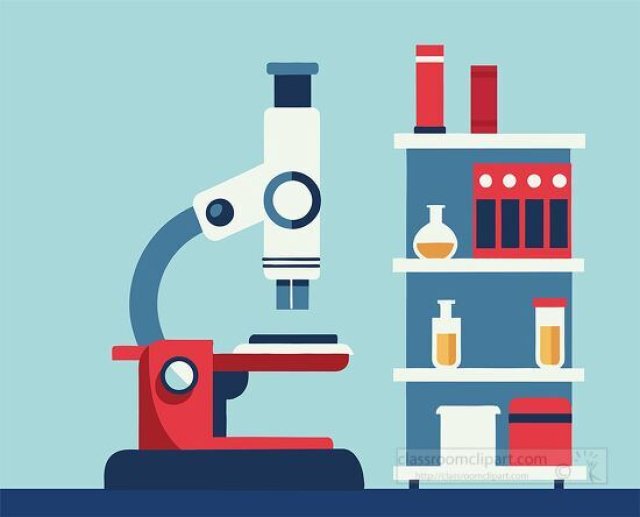The Microscope for Kids: How We Discover the Tiny World of Cells and Microbes
Learn how microscopes work, who invented them, and how they help us study tiny things like cells, germs, and bacteria in this fun and educational article

🔬 The Microscope – Exploring the Hidden World
🌟 Introduction and Summary
Have you ever wondered what a drop of pond water looks like up close? Or how small a bacteria or a cell really is? You can’t see them with just your eyes — but with a microscope, you can!
Microscopes are amazing tools that help scientists and students see tiny things that are too small to see without help. From germs and plant cells to insects and crystals, the microscope reveals a whole hidden universe.
🧬 What Is a Microscope?
A microscope is a device that makes small objects look bigger so we can see them in detail. It uses lenses to bend light and magnify tiny items—sometimes hundreds or even thousands of times larger!
Microscopes help scientists study living things like cells, bacteria, viruses, and tissues. They are used in science labs, hospitals, and schools around the world.
🔍 How Do Microscopes Work?
Most microscopes use light and lenses to magnify objects. Here’s how it works:
- Light shines through or on the object.
- Lenses bend the light to make the image look bigger.
- Your eye or camera sees the magnified image through the eyepiece.
Some microscopes, like electron microscopes, use beams of electrons instead of light to see objects that are millions of times smaller!
🏛️ A Brief History of the Microscope
🧪 Early Inventions
- In the late 1500s, Dutch eyeglass makers Hans and Zacharias Janssen created one of the first microscopes by putting two lenses in a tube.
- Around 1674, Antonie van Leeuwenhoek improved the microscope and was the first person to see bacteria and blood cells!
- In the 1800s, microscopes became more powerful and were used to study diseases and human biology.
🧠 Types of Microscopes
There are many kinds of microscopes, each designed for a different job:
| Microscope Type | What It Does | Common Uses |
|---|---|---|
| Light Microscope | Uses light and lenses | Schools, biology labs |
| Stereo Microscope | Shows 3D images of larger objects | Dissecting plants and insects |
| Electron Microscope | Uses electron beams for high detail | Research labs, nanotechnology |
| Digital Microscope | Connects to a screen or computer | Classrooms, photos, and videos |
🏥 Why Microscopes Are So Important
Microscopes have helped scientists:
- Discover cells — the building blocks of life
- Understand diseases like cancer and infections
- Develop vaccines and medicines
- Explore the tiniest parts of plants, animals, and even rocks
- Study DNA and genetics
Without microscopes, we wouldn’t know how life works at the smallest level!
🧪 What Can You See with a Microscope?
Microscopes let you explore a world you can’t see with your eyes alone. You can see:
- Cells from plants and animals
- Bacteria and germs
- Pollen grains
- Tiny bugs and insect parts
- Fibers in clothes
- Crystals and grains of sand
The closer you look, the more amazing it becomes!
🧠 Famous Figures in Microscope History
| Name | Contribution |
|---|---|
| Hans & Zacharias Janssen | Built one of the first microscopes |
| Antonie van Leeuwenhoek | First to observe bacteria and cells |
| Robert Hooke | Coined the word “cell” while using a microscope |
| Ernst Ruska | Invented the electron microscope in 1931 |
📘 Kid-Friendly Summary
A microscope is a tool that makes tiny things look big so we can study them. It uses light or electrons and lenses to show us things like cells and bacteria. People started using microscopes over 400 years ago, and today they are a big part of science and medicine. With a microscope, we can explore a whole world we can’t see with just our eyes!
⭐ Interesting Facts
- The word “microscope” comes from Greek and means “to look at small things.”
- Antonie van Leeuwenhoek called the bacteria he saw “animalcules” (tiny animals)!
- Some microscopes can magnify objects over 10 million times!
- There are even pocket microscopes that fit in your backpack.
- NASA uses microscopes in space labs to study tiny life forms.
🔑 Key Takeaways
- Microscopes let us see tiny things by magnifying them using light or electrons.
- The first microscopes were invented in the late 1500s.
- Microscopes are essential in biology, medicine, and research.
- They helped us discover cells, germs, and the structure of DNA.
- There are many kinds of microscopes used in schools, hospitals, and science labs.
📚 Vocabulary Words
| Word | Definition |
|---|---|
| Microscope | A tool that makes tiny objects look larger so we can study them |
| Magnify | To make something appear bigger |
| Lens | A curved piece of glass or plastic that bends light |
| Cell | The smallest building block of living things |
| Electron | A tiny particle used in advanced microscopes for super‑high magnification |
| Specimen | The object being studied under the microscope |

















































